This is a classic event for using  - the technique of a method that calls itself:
- the technique of a method that calls itself:
public static Filter CreateFilter(List<int> values) => values.Any() ? new Filter //If the list contains elements, create the filter
{
Value = values.First(), //assign the first item of the values to the value property
NextFilter = CreateFilter(values.Skip(1).ToList()) //Create the rest of the nested object with the rest of the values
} : null; //If there aren't any items left in the list, return null and stop the recursion
You could of course do it in the constructor as well:
public Filter(List<int> values)
{
if (!values.Any()) return;
Value = values.First();
NextFilter = values.Count > 1 ? new Filter(values.Skip(1).ToList()) : null;
}
For more information about recursion, take a look at this: https://www.dotnetperls.com/recursion, for more information on nested classes read through this: https://www.dotnetperls.com/nested-class.
A few more information on recursion:
You can actually achieve everything through recursion - you don't even need loops. That's the reason why in languages like Haskell loops don't exist.
The simplest recursive function is:
public static void EndlessLoop()
{
//Loop body
EndlessLoop();
}
However, even Resharper suggests to convert it to a loop:

Another example, if you want to get the sum of a list you could do:
public static int Sum(List<int> summands) => summands.Count > 0
? summands.First() + Sum(summands.Skip(1).ToList())
: 0;
But those examples aren't useful in C#, as C# isn't a functional programming language, which causes recursion to be slower than loops. Furthermore recursion often causes a StackOverflowException (fitting to this site). If you run the endless loop recursion, it doesn't even take a second till your stack is full.
The reason for this is, that C# adds the address, from which a method got called, to the stack. If a method is called very often (and in 1 second a lot of recursive calls are made) a lot of addresses are added to the stack, so that it overflows.
However I still think, even though those examples aren't useful in c#, that it's quite useful to be able to handle recursion. Recursion is for example the only way to explore a directory structure, for getting for example all files:
public static List<FileInfo> GetAllFiles(DirectoryInfo directory) => directory.GetFiles()
.Concat(directory.GetDirectories().SelectMany(GetAllFiles))
.ToList();
And, as you experienced, it's the only way to fill a nested class from a list properly.

